Are you looking to travel more and save money while doing so? One way to do this is by using a miles card. This card allows you to earn points or miles for every dollar you spend, which you can redeem for flights, hotel stays, and other travel-related expenses. In this article, we’ll cover everything you need to know about miles cards in Singapore.

Understanding how miles cards work is crucial before you start using one. In Singapore, many types of miles cards are available, each with its own set of benefits and drawbacks. Some cards earn miles at a higher rate for specific categories, such as dining or travel, while others have lower fees or offer additional perks like lounge access or travel insurance. Knowing which card is right depends on your spending habits and travel goals.
Once you better understand how miles cards work and which ones are available, you can start earning and redeeming miles. Making miles is straightforward: simply use your miles card for everyday purchases and watch your miles balance grow. Redeeming miles can be more complicated, as each airline or hotel program has rules and restrictions. However, with some planning and research, you can use your miles to save money on travel and enjoy new experiences.
Key Takeaways
- Miles cards allow you to earn points or miles for every dollar you spend, which you can redeem for flights, hotel stays, and other travel-related expenses.
- Understanding how miles cards work is crucial before you start using one, and choosing the right card depends on your spending habits and travel goals.
- Once you have a miles card, you can earn and redeem miles to save money on travel and enjoy new experiences.
Understanding Miles Card in Singapore

If you’re a frequent traveller, you may have heard about miles cards or air miles credit cards. These cards can help you earn miles that can be redeemed for flights, hotel stays, and other travel-related expenses. In this section, we will explain what miles cards are, how they work, and the different types of miles cards available in Singapore.
What Is Miles Card?
Miles cards, also known as air miles credit cards, are credit cards that allow you to earn miles for every dollar you spend. These miles can be redeemed for flights, hotel stays, car rentals, and other travel-related expenses. Some miles cards also offer other perks like lounge access, travel insurance, and concierge services.
How Do Miles Card Work?
When you use a miles card to make a purchase, you earn a certain number of miles per dollar spent. The number of miles you earn depends on the card you have and the type of purchase you make. For example, some cards may offer more miles for travel-related purchases, while others may provide more miles for dining or shopping.
Once you have accumulated enough miles, you can redeem them for travel-related expenses. The redemption process varies depending on the card you have and the miles program it offers. Some cards may allow you to redeem miles directly through their website, while others may require you to call a customer service representative.
Types of Miles Card: Entry-Level vs Premium
There are two main types of miles cards: entry-level and premium. Entry-level miles cards are designed for people who are new to miles cards or do not travel frequently. These cards typically have lower annual fees and lower reward rates but are easier to qualify for.
On the other hand, Premium miles cards are designed for frequent travellers or people who want to earn more miles and enjoy more perks. These cards typically have higher annual fees but offer higher reward rates, more miles, and more perks such as lounge access, travel insurance, and concierge services.
In conclusion, miles cards can be a great way to earn miles that can be redeemed for travel-related expenses. Understanding how miles cards work and the different types of miles cards available can help you choose the right card for your needs.
Top Miles Card Available
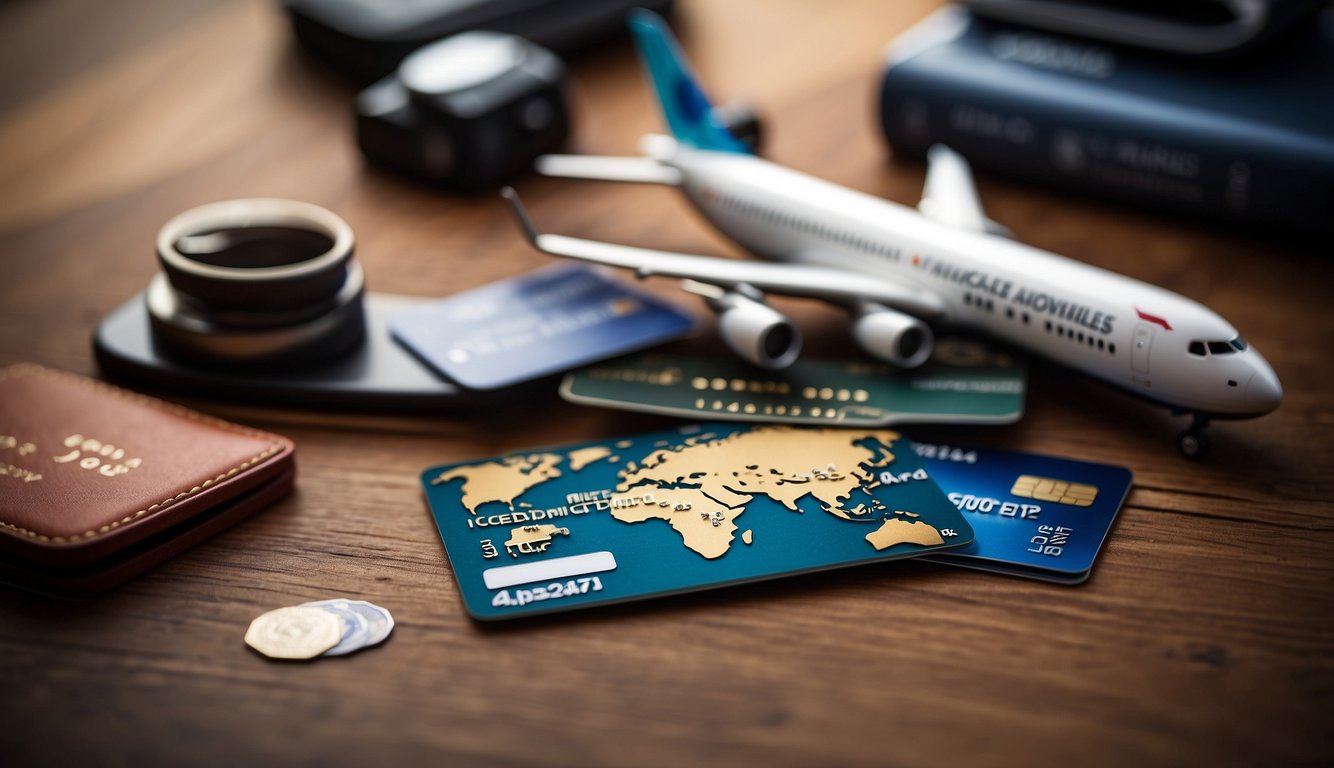
Singapore has plenty of options if you’re looking for a miles card that suits your lifestyle. Here are some of the top miles cards available:
Citi PremierMiles Card
The Citi PremierMiles Card is an excellent option for frequent travellers, with 1.2 miles earned per $1 spent locally and 2 miles earned per $1 spent overseas. The card also offers a range of travel perks, including free travel insurance and access to over 1,000 airport lounges worldwide.
DBS Altitude Card
The DBS Altitude Card is another popular choice for travellers, with 1.2 miles earned per $1 spent locally and 2 miles earned per $1 spent overseas. The card also offers a range of travel benefits, including free travel insurance and access to over 1,000 airport lounges worldwide.
OCBC 90°N Card
The OCBC 90°N Card is a great option for those who want to earn miles on their everyday spending. The card offers 1.2 miles earned per $1 spent locally and 2.1 miles earned per $1 spent overseas. Cardholders also enjoy exclusive travel privileges, including free travel insurance and access to airport lounges worldwide.
HSBC Revolution Card
The HSBC Revolution Card is a popular choice for those who want to earn reward points that can be converted to miles. Cardholders earn 1 reward point per $1 spent locally and 2 reward points per $1 spent overseas. The card also offers a range of lifestyle benefits, including discounts on dining and entertainment.
Maybank Horizon Card
The Maybank Horizon Card is a great option for those who want to earn miles on their everyday spending. The card offers 3.2 air miles per $1 spent on dining, petrol, and taxi rides and 2 air miles per $1 spent on travel and foreign currency transactions. Cardholders also enjoy a range of travel benefits, including free travel insurance and airport lounge access.
Overall, these are some of the best miles cards available in Singapore. Each card offers its unique benefits, so be sure to choose one that suits your lifestyle and spending habits.
Earning and Redeeming Miles Card
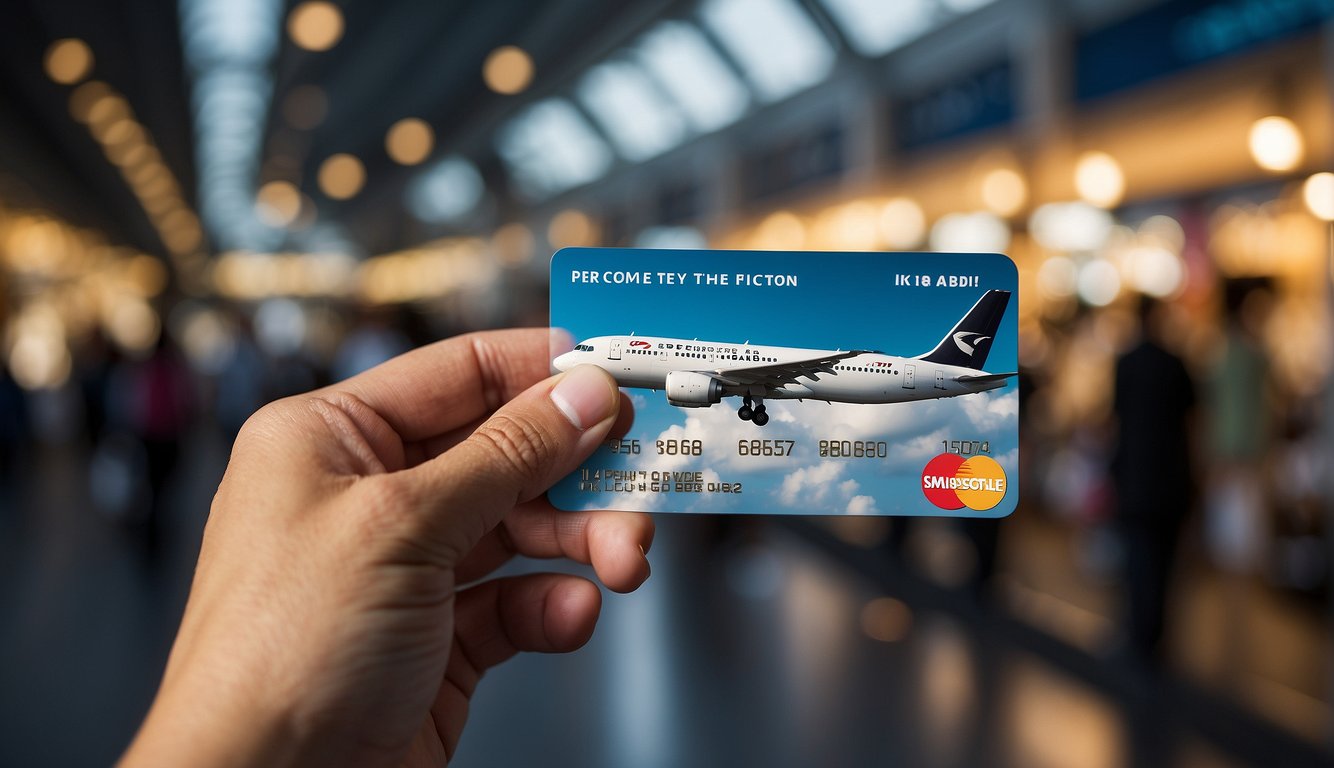
If you’re looking to maximise your travel rewards, earning and redeeming miles is the way to go. Here is everything you need to know about earning and redeeming miles in Singapore.
Earning Miles on Everyday Spend
One of the easiest ways to earn miles is through everyday spending. Many miles cards offer earn rates of up to 4 miles per dollar spent on dining, grab rides, and shopping. Some cards also offer bonus miles for overseas spending.
To maximise your earn rate, look for cards that offer high earn rates on local spending.
Maximising Miles on Travel Bookings
Booking your travel through certain travel booking sites can also earn you miles. Agoda, Kaligo, and Expedia are just a few sites that offer earn rates of up to 6 miles per dollar spent on hotel bookings. Some miles cards also offer bonus miles for travel bookings made through specific sites.
Understanding Redemption Value
When it comes to redeeming your miles, it’s important to understand the redemption value. Some airlines offer better redemption value than others, so it’s important to do your research before redeeming your miles. Singapore Airlines KrisFlyer is a great option for redeeming miles for transcontinental flights and flights in Singapore Suites.
To get the most out of your miles, look for redemption options with high value, such as business or first-class flights. It’s also important to keep an eye out for promotions and deals that can help you stretch your miles even further.
Overall, earning and redeeming miles can be a great way to maximise your travel rewards. By using your miles card for everyday spending and booking your travel through certain sites, you can earn miles quickly and easily. Just be sure to understand the redemption value and look for high-value redemption options to get the most out of your miles.
Miles Card vs Points vs Cashback
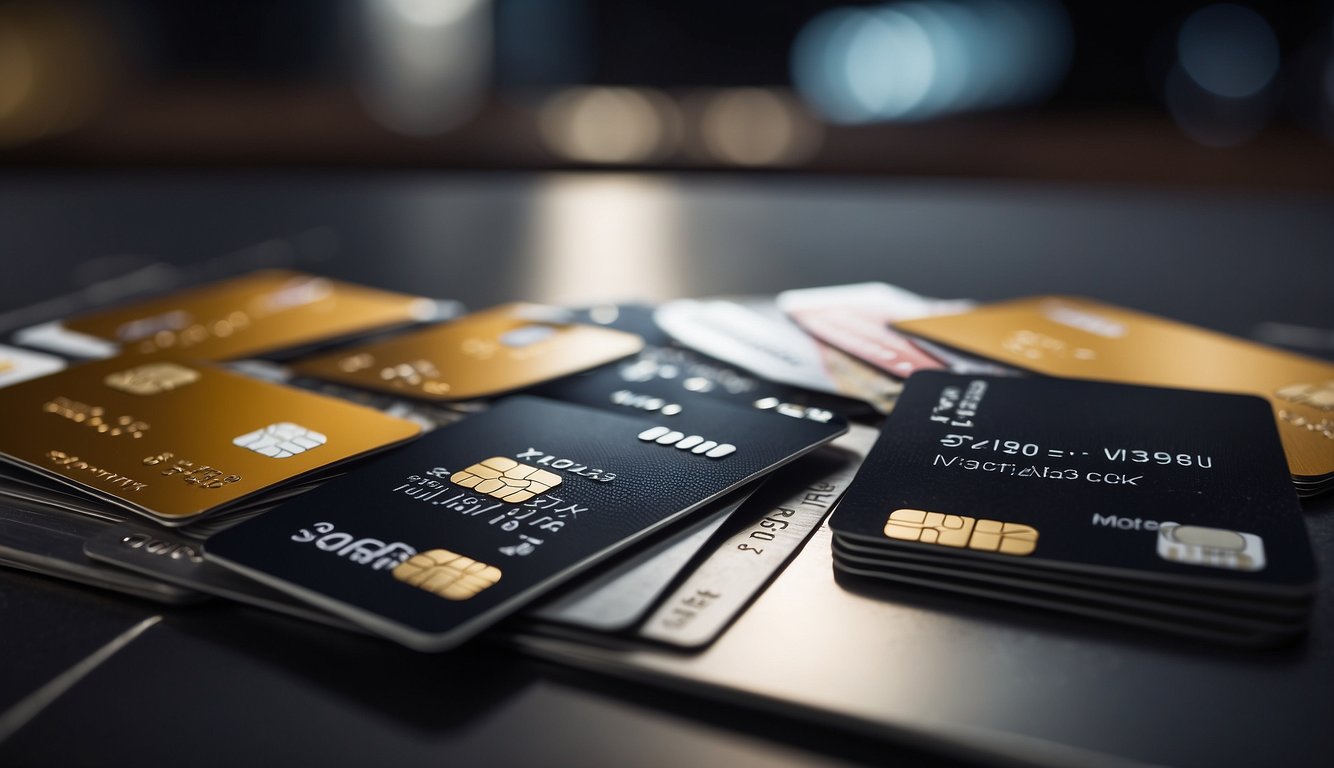
When it comes to credit cards, there are three main types of rewards you can earn: miles, points, and cashback. Each type of reward has its own benefits and drawbacks. In this section, we will compare these rewards types to help you understand which one is right for you.
Comparing Rewards Types
Miles
Miles are rewards that can be used to redeem flights, hotel stays, and other travel-related expenses. They are typically earned by using a rewards credit card that offers miles as a reward for spending. Some cards offer bonus miles for certain types of purchases, such as dining or travel.
The value of miles can vary depending on the airline or hotel loyalty program they are associated with. Some programs offer fixed-value miles, while others have a variable value based on the cost of the flight or hotel stay.
Points
Points are similar to miles in that they can be earned by using a rewards credit card. However, points can be redeemed for a wider variety of rewards, including merchandise, gift cards, and travel-related expenses. Some credit card companies also have their own online shopping portals where you can redeem points for merchandise.
The value of points can vary depending on the credit card company and the rewards program they are associated with. Some programs offer fixed-value points, while others have a variable value based on the cost of the reward.
Cashback
Cashback is a reward that gives you a percentage of your spending back in cash. For example, a credit card may offer 2% cashback on all purchases. Cashback can be redeemed for statement credits, checks, or direct deposits into your bank account.
The value of cashback is straightforward – it is a percentage of the amount you spend. However, some credit cards may have limits on how much cashback you can earn or may only offer cashback for certain types of purchases.
Deciding What’s Best for You
When deciding which type of reward is best for you, consider your spending habits and lifestyle. If you travel frequently, miles may be the best choice for you. Points may be the better option if you prefer flexibility in your rewards. Cashback may be the way to go if you want a straightforward reward that gives you cash back.
It’s also important to consider the fees and interest rates associated with each type of rewards credit card. Some cards may have higher annual fees or interest rates, which can offset the value of the rewards you earn.
In summary, each type of reward – miles, points, and cashback – has its own benefits and drawbacks. Consider your spending habits and lifestyle when deciding which type of rewards credit card is right for you.
Miles Card: Understanding Fees and Charges

When it comes to miles cards, understanding the fees and charges is crucial to maximising your rewards. Here are the most important fees and charges to keep in mind:
Annual Fees and Waivers
Most miles cards come with an annual fee, which can range from as low as £50 to as high as £500 or more. However, some cards offer no annual fee for the first year, and some even waive the annual fee altogether if you meet certain spending requirements.
It’s important to weigh the benefits of a card against its annual fee. If the rewards you’ll earn with the card outweigh the annual fee, it may be worth it. However, if you’re not sure you’ll be able to earn enough rewards to offset the fee, a no annual fee card may be a better choice.
Foreign Transaction and Conversion Fees
If you plan on using your miles card while travelling abroad, it’s important to understand the foreign transaction and conversion fees that may apply. Foreign transaction fees are charged by some card issuers when you use your card to make purchases in a foreign currency. These fees can range from 1% to 3% of the transaction amount.
Conversion fees, on the other hand, are charged by the card issuer when you convert your miles to a frequent flyer program. These fees can also vary, so it’s important to check the terms and conditions of your card to see what fees may apply.
To avoid these fees, look for a card that offers no foreign transaction or conversion fees. Some cards even offer additional rewards for spending abroad, making them a great choice for frequent travellers.
Overall, understanding the fees and charges associated with your miles card is crucial to getting the most out of your rewards. By choosing a card with low fees and maximising your spending, you can earn more miles and enjoy more travel rewards.
Strategies for Maximising Miles Card
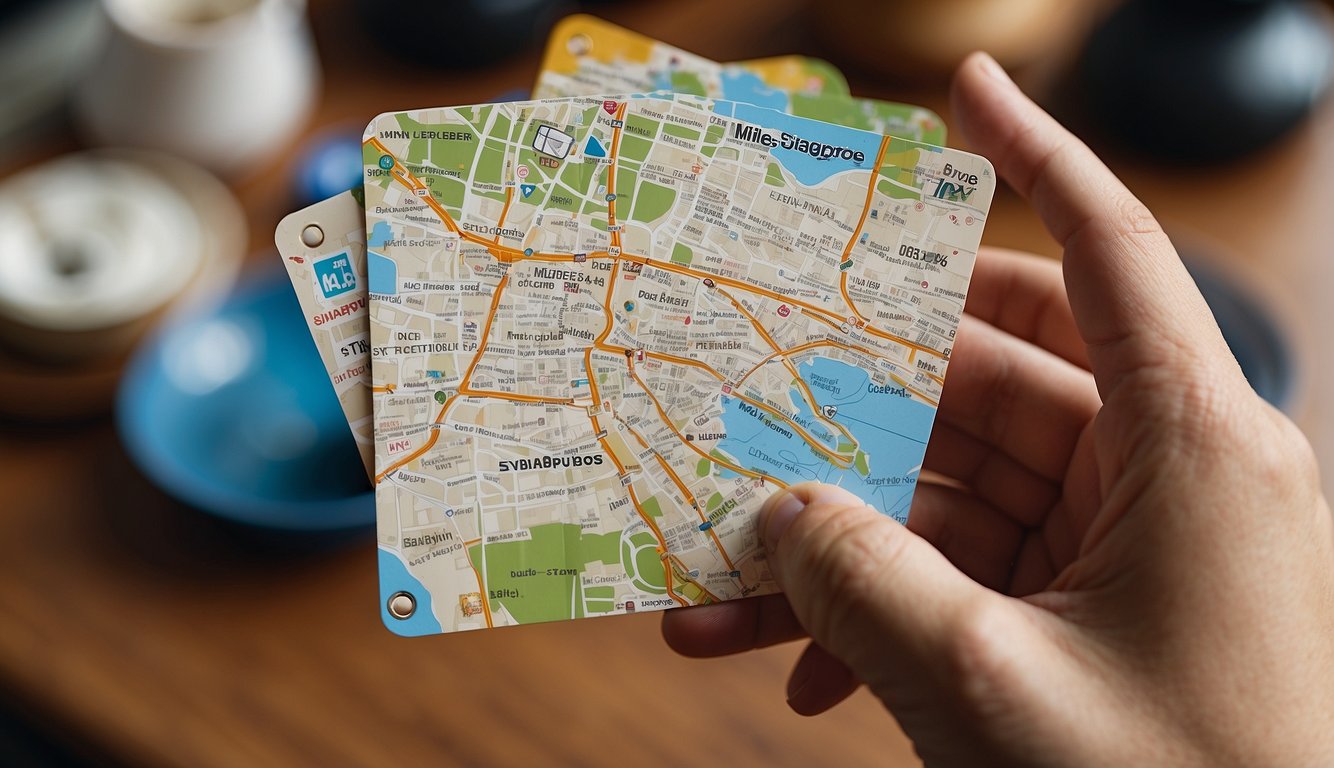
If you’re looking to maximise your miles, there are a few strategies you can use to get the most out of your credit card spending.
Strategic Card Usage for Different Expenditures
Different credit cards offer different rates of miles per dollar spent, so it’s important to choose the right card for each expenditure. For example, if you’re making a lot of overseas spending, you might want to consider a card that offers a high rate of miles for foreign currency transactions. The Citi Miles card, for example, offers 2 miles per dollar spent on foreign currency transactions.
For local spend, you might want to consider a card that offers a high rate of miles for contactless payments. The Standard Chartered Journey Credit Card, for example, offers 1.2 miles per dollar spent on contactless payments.
Leveraging Transfer Bonuses and Partnerships
Another way to maximise your miles is to take advantage of transfer bonuses and partnerships. For example, Singapore Airlines KrisFlyer has partnerships with a number of airlines, including Cathay Pacific Asia Miles. This means that you can transfer your KrisFlyer miles to Asia Miles at a favourable conversion rate, which can then be used to redeem flights on Cathay Pacific.
Similarly, credit card issuers like American Express and UOB often offer transfer bonuses when you transfer your points to a frequent flyer program. These bonuses can be as high as 30%, which means you can get even more miles for your spending.
It’s important to note that miles do have an expiry date, so it’s important to use them before they expire. You can keep track of your miles balance using the respective mileage programme’s website or app.
By using the right credit card for each expenditure and taking advantage of transfer bonuses and partnerships, you can maximise your miles and earn free flights and other travel-related perks. Just be sure to check for any transfer fees or change fees before making any transfers.
Miles Card: Additional Benefits and Perks
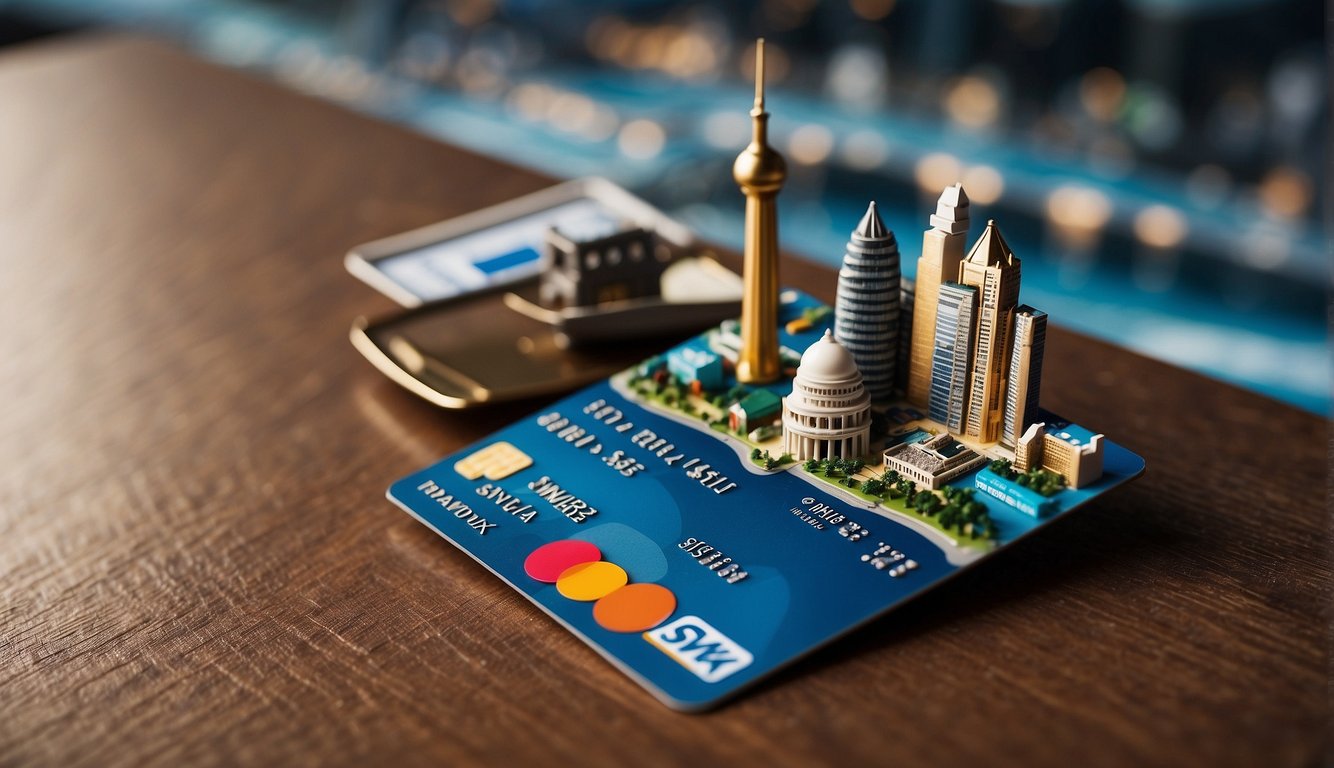
When it comes to credit cards that offer travel rewards, you can expect more than just miles. Most miles cards come with a range of additional benefits and perks that can make your travel experience even better.
Travel Insurance and Lounge Access
Many miles cards in Singapore offer complimentary travel insurance and lounge access. This means that you can enjoy peace of mind knowing that you are covered for unexpected events during your travels, such as flight delays or lost baggage. Additionally, lounge access can make your airport experience more comfortable and enjoyable, with amenities such as free Wi-Fi, refreshments, and comfortable seating.
Exclusive Deals and Offers
In addition to travel-related benefits, miles cards also offer a range of exclusive deals and offers. For example, some petrol stations offer discounts on fuel purchases when you use a certain miles card. Some cards also offer discounts on dining, shopping, and entertainment, making it easier to save money while enjoying your favourite activities.
If you are looking for a miles card that offers a wide range of benefits and perks, consider looking into cards offered by Visa, Mastercard, Wise, and American Express Singapore Airlines KrisFlyer Credit Card. These cards offer a range of benefits, including travel insurance, lounge access, and exclusive deals and offers.
Overall, miles cards in Singapore offer a range of benefits and perks that can make your travel experience more enjoyable and affordable. Whether you are a frequent traveller or just looking to save money on your everyday purchases, a miles card can be a valuable addition to your wallet.
Miles Card: Navigating Expiry Dates and Mileage Caps
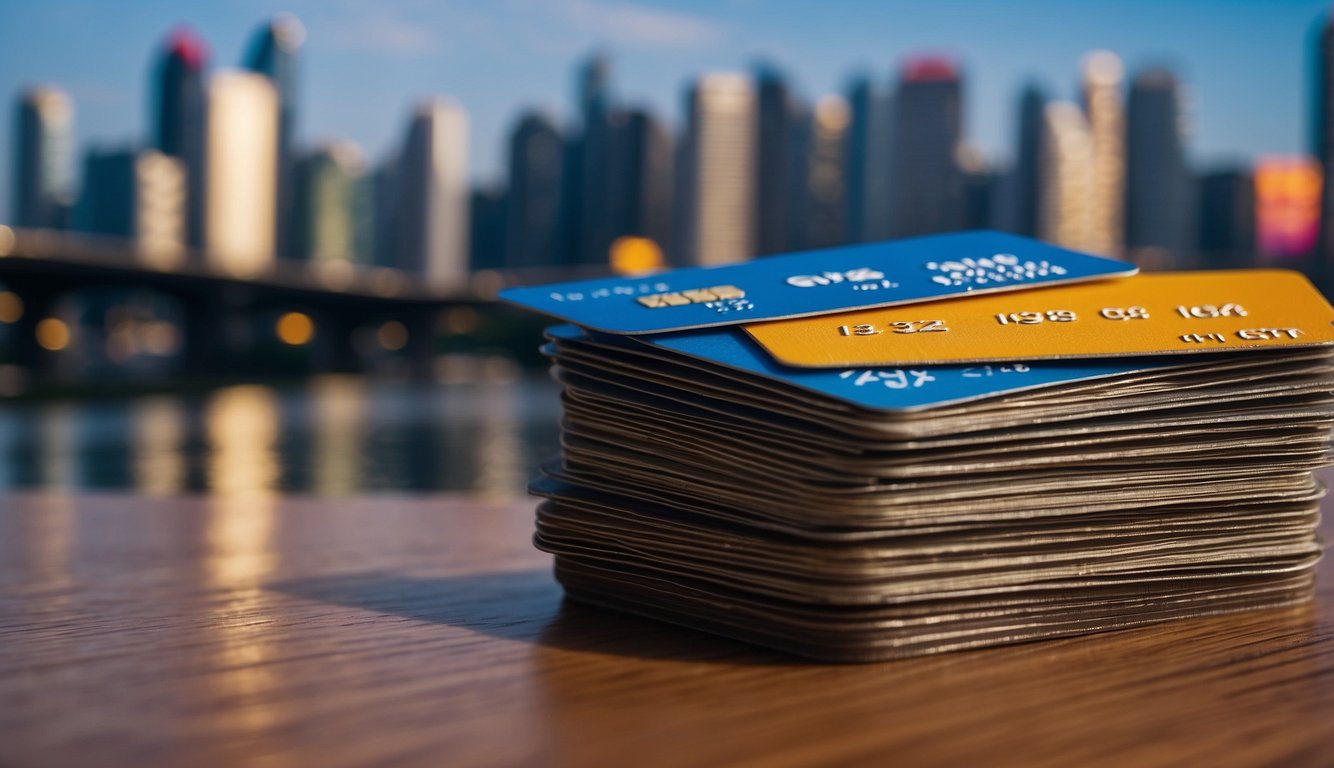
As you explore the world of miles cards, it’s important to understand the policies surrounding mileage expiry and caps. In this section, we’ll cover everything you need to know about navigating these policies.
Understanding Mileage Expiry Policies
One of the most important things to understand about miles cards is that your miles will typically have an expiry date. You’ll need to use your miles before they expire or risk losing them altogether.
Different airlines and credit card companies have different policies regarding mileage expiry. For example, some airlines may allow you to keep your miles indefinitely, while others may require you to use your miles within a specific timeframe.
To avoid losing your miles, keeping track of when they expire is essential. You can do this by setting reminders for yourself or by regularly checking your account to see when your miles are set to expire.
Managing Mileage Caps and Limitations
In addition to mileage expiry, many miles cards come with mileage caps and limitations. These caps and constraints may restrict the miles you can earn in a given timeframe or limit the purchases that qualify for miles.
To make the most of your miles card, it’s essential to understand these caps and limitations. This will help you to maximize your rewards and earn as many miles as possible.
Some tips for managing mileage caps and limitations include:
- Understanding the types of purchases that qualify for miles
- Keeping track of your mileage balance to ensure you don’t exceed any caps
- Timing your purchases to ensure you earn the maximum amount of miles possible
By remembering these tips, you can make the most of your miles card and ensure you’re earning as many rewards as possible.
Navigating mileage expiry and caps can be a bit confusing at first. However, with research and careful planning, you can make the most of your miles card and earn plenty of rewards.
Choosing the Right Miles Card for You
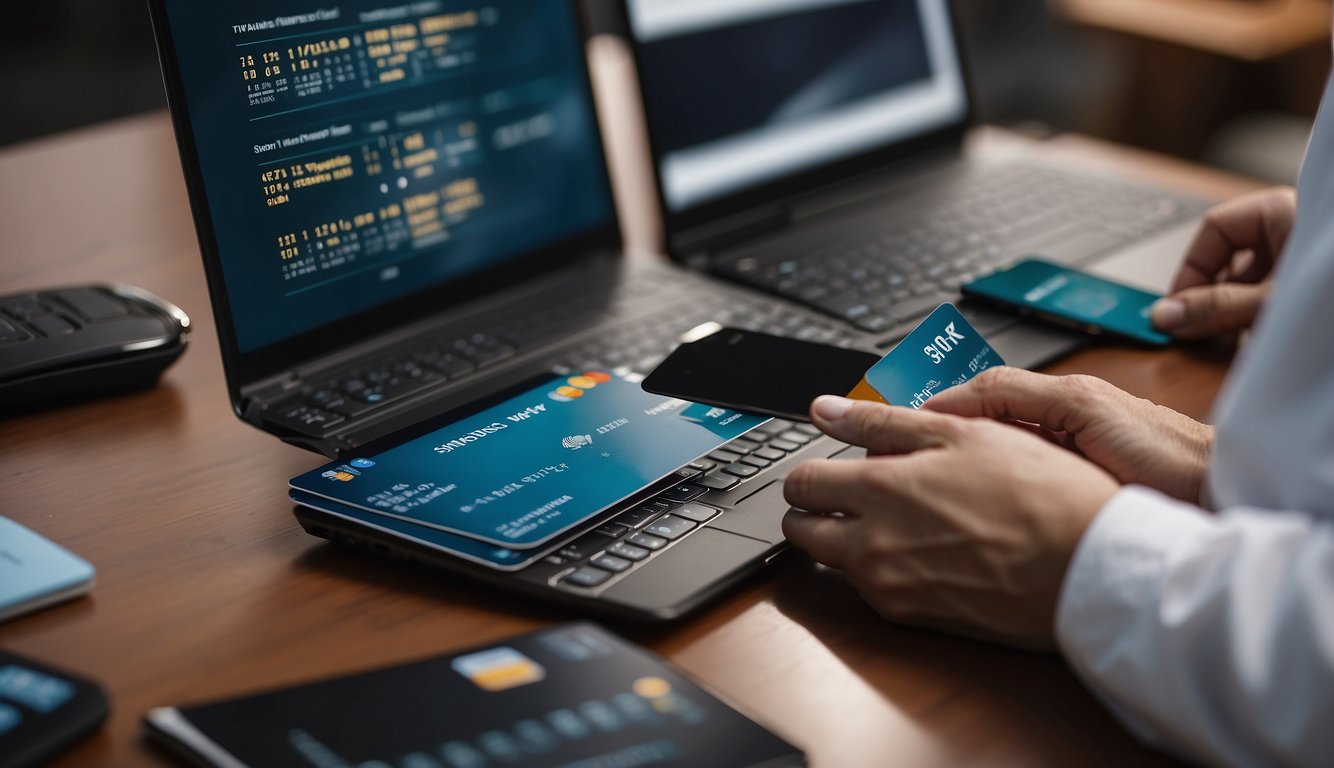
Are you excited to start earning miles and redeeming them for your dream holiday? With so many air miles credit cards available in Singapore, choosing the right one can be overwhelming. Here are some tips to help you assess your spending habits and match them to your travel goals.
Assessing Your Spending Habits
Before choosing a miles card, it’s essential to understand your spending habits. Look at your monthly expenses and categorise them into different spending categories such as dining, groceries, travel, and entertainment. This will help you identify which categories you spend the most on and which card offers the best rewards.
Some cards offer bonus miles for specific categories, such as the Citi PremierMiles Card, which offers 10x miles for online travel bookings and 3x miles for dining. On the other hand, the DBS Altitude Visa Signature Card offers 3 miles per $1 spent on online flight and hotel transactions and 2 miles per $1 spent on overseas transactions.
Matching Cards to Your Travel Goals
Once you have assessed your spending habits, it’s time to match them to your travel goals. Do you want to redeem your miles for flights, hotel stays, or both? Do you have a preferred airline or hotel chain? Ensure the miles card offers rewards that align with your travel goals.
For example, the KrisFlyer UOB Credit Card is an excellent choice if you frequently fly with Singapore Airlines or its partner airlines. You can earn up to 3.3 KrisFlyer miles per $1 spent on Singapore Airlines, SilkAir, and Scoot, and up to 2 KrisFlyer miles per $1 spent on dining and online shopping.
Another card to consider is the American Express Singapore Airlines KrisFlyer Credit Card. With this card, you can earn up to 3.1 KrisFlyer miles per $1 spent on Singapore Airlines, SilkAir, and KrisShop, and up to 2 KrisFlyer miles per $1 spent on dining, petrol, and taxi rides.
Remember, the best air miles credit card for you depends on your spending habits and travel goals. Take the time to research and compare different cards before making a decision.
Frequently Asked Questions

What’s the most thrilling miles card to snag in Singapore?
The most thrilling miles card for you will depend on your lifestyle and spending habits. Some popular options include the Citi PremierMiles Card, the American Express KrisFlyer Credit Card, and the DBS Altitude Card. You can compare the features and benefits of each card to determine which one suits your needs the best.
How can you maximise your rewards with a miles card?
To maximise your rewards with a miles card, you must use it for all your everyday expenses, including groceries, dining, and shopping. You can also use promotions and bonus offers to earn more miles. Make sure to pay off your balance in full every month to avoid interest charges.
What are the top perks of using a miles card?
The top perks of using a miles card include earning miles for every dollar spent, redeeming miles for flights and other travel perks, and enjoying exclusive privileges such as lounge access and travel insurance. Some cards also offer discounts on dining, shopping, and entertainment.
How do you select the perfect miles card to suit your lifestyle?
To select the perfect miles card to suit your lifestyle, you must consider your spending habits, travel preferences, and budget. Look for a card that offers bonus miles for the categories where you spend the most, and make sure to compare the annual fees and interest rates of different cards.
Could you explain how miles cards function?
Miles cards reward you with miles for every dollar spent on eligible purchases. These miles can be redeemed for flights, hotel stays, car rentals, and other travel-related expenses. Some cards also offer cashback, points, or other rewards.
What’s the value of 10,000 KrisFlyer miles in pounds sterling?
As of January 2024, 10,000 KrisFlyer miles is approximately £55. However, the value may vary depending on factors such as the destination, travel dates, and availability of flights.

